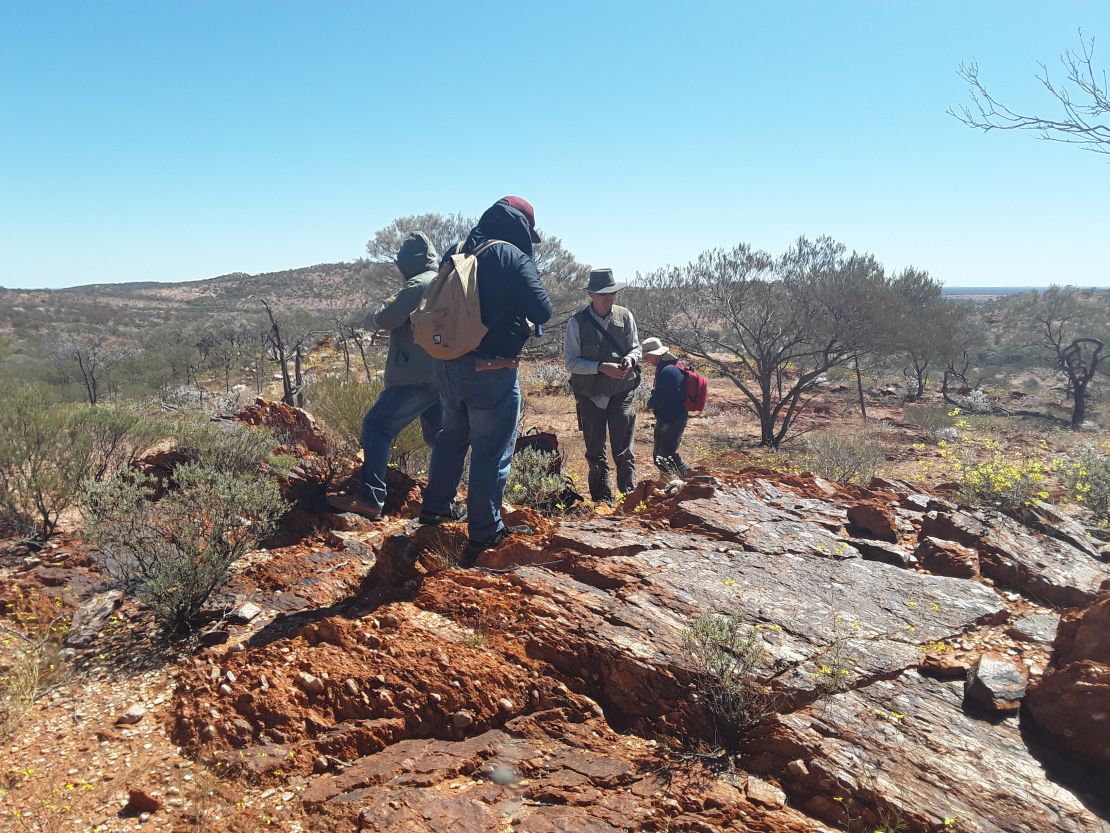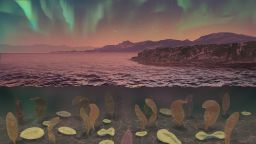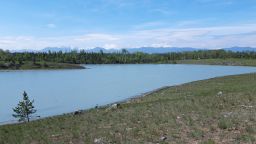Sign up for CNN’s Wonder Theory science newsletter. Explore the universe with news on fascinating discoveries, scientific advancements and more.
A new analysis of ancient grains of crystal embedded in rock from the Australian outback suggests Earth had dry land and fresh water some 4 billion years ago — a time when scientists had thought the planet was completely covered in ocean.
Chemical clues contained in the crystals revealed that the hot, molten rocks in which they originated came into contact with fresh water during the crystals’ formation, according to a study published Monday the journal Nature Geoscience.
“By examining the age and oxygen isotopes in tiny crystals of the mineral zircon, we found unusually light isotopic signatures as far back as four billion years ago,” said lead study author Hamed Gamaleldien, an adjunct research fellow in Curtin University’s School of Earth and Planetary Sciences in Australia and an assistant professor at Khalifa University in the United Arab Emirates, in a news release. “Such light oxygen isotopes are typically the result of hot, fresh water altering rocks several kilometres below Earth’s surface.”
Gamaleldien said that evidence of the presence of fresh water could only be explained by the existence of dry land — where water would collect and seep into the continental crust.
“We have two important things here. We have discovered the earliest evidence of fresh water and representative evidence for dry land above the sea,” he added.
The research indicates that the Earth’s water cycle — when water moves between land, oceans and atmosphere through evaporation and precipitation — was operating at that point in time.
This finding, the authors said, means the recipe for the origins of life existed less than 600 million years after Earth’s formation, long before the dinosaurs or even the earliest known microbial life. The earliest widely agreed upon evidence of life — and fresh water — comes from stromatolites, fossilized microbes that formed mounds in hot springs 3.5 billion years ago, Gamaleldien said.
“This discovery not only sheds light on Earth’s early history but also suggests … landmasses and fresh water set the stage for life to flourish within a relatively short time frame — less than 600 million years after the planet formed,” said study coauthor Hugo Olierook, a senior research fellow at Curtin’s School of Earth and Planetary Sciences, in a statement.
“The findings mark a significant step forward in our understanding of Earth’s early history and open doors for further exploration into the origins of life,” he added.

A portal into early Earth
The Hadean Eon, from 4.5 billion to 4 billion years ago, is the earliest chapter in Earth’s history and a geological dark age that’s little understood because geologists simply don’t have rocks that old to study: The oldest known rocks are 4 billion years old.
So how then do zircon crystals act as a portal into the planet’s earliest history? The tiny mineral grains are particularly tough and can be cemented into younger rock. The zircons in the study were found in 3.1 billion year-old orange sandstone from the Jack Hills formation, an outcrop of weathered rock in Western Australia.
What makes zircons particularly useful to geologists is that they incorporate a bit of uranium into their structure and scientists can pinpoint their age by measuring the radioactive decay of uranium ions. The oldest material of terrestrial origin was a zircon found in the Jack Hills formation dated to 4.4 billion years ago.
“(Zircon) is a unique mineral. It is highly resistant and doesn’t alter (over time),” Gamaleldien said. “It’s the only witness to the Hadean period.”
To reach their findings, researchers extracted, mounted and polished 2,500 zircon grains — about the width of two or three strands of human hair — before dating 1,400 of them and measuring different isotopes, or versions, of oxygen inside the zircons.
Salt water contains heavier oxygen isotopes, which are resistant to evaporation, while rainwater contains lighter isotopes, Gamaleldien said. Two zircon crystals showed isotopic evidence of meteoric or fresh water; one was 4 billion years old, while the other was 3.4 billion years old, he said.
The team ran 10,000 simulations of zircon composition using a computer model — how hot molten rocks mixed with seawater, rainwater or a combination of both — and found that only with some fresh water could they explain the light isotopic signature of their zircons.
Conditions for the origin of life
Gamaleldien said it was impossible to know from their work whether there would have been large landmasses, but there would have been some dry land above sea level. What’s more, land and fresh water, which likely would have fallen as rain, would have provided the essential ingredients for the origin of life, he said.
Scientists have different theories about life’s origins on Earth. Some believe it formed around deep ocean vents, but others suspect it came about in shallow bodies of water on land. Gamaleldien said the new findings provide support for the latter hypothesis, and the researchers want to recover more zircons for geochemical analysis to investigate further.
John Valley, a professor of geoscience at the University of Wisconsin-Madison, agreed that the conditions for life could have existed on Earth so long ago. Valley wasn’t involved in the new research but was among the first scientists to use zircons to show that Earth had ancient oceans and cooler temperatures more than 4 billion years ago, challenging the view that Hadean Earth was a hellish orb with fiery seas of magma.
However, he said that the fluid the zircon precursor came into contact with could have been rainwater or seawater and that the computer model the study authors used assumed the isotopic composition of the Hadean ocean was identical to that of today’s oceans.
“The main novelty of the new paper is concluding that rainwater means the rocks were (on land) … rather than submarine,” Valley said. “This has always been regarded as one possibility, but there is no new evidence presented that allows one to know this.”
Geochemist Beth Ann Bell, an assistant researcher at UCLA’s department of earth, planetary and space sciences, said the very light isotope values “made a strong case” for interactions between rock and fresh water during the Hadean period, which implied some amount of dry land at that time. She wasn’t involved in the study.
“Zircon is physically tough and won’t weather away at Earth’s surface,” Bell said in an email. “(It) routinely survives billions of years in the crust and at the surface with its geochemical information (intact).”






